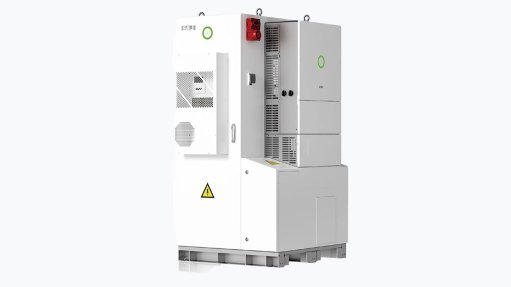Modest recovery forecast for South African steel industry


WARRICK ROBERTSON Although international credit insurer Coface forecasts a modest recovery for the steel industry, the company emphasizes that sub-Saharan Africa is a growing market for South African steel products
International credit insurer Coface noted a 40% increase in the number of steel company liquidations in 2013.
“Coface encountered 55 cases of liquidation in the local steel industry last year,” Coface industry analyst Warrick Robertson says, adding that the credit insurer observed a 56% increase in the claims value for the steel industry for 2013, which suggests that the losses incurred from the liquidations were severe.
Coface believes that the increase in liquidations can mostly be attributed to the First Strut group liquidation – the largest corporate bond default in South Africa’s history.
“Companies that supplied the First Strut group without credit insurance were forced to write off large amounts of bad debt,” Robertson says, adding that significant losses and liquidations were caused by the trickle-down effect to other companies.
Coface forecasts only a marginal recovery for the South African steel industry this year, as the investment required for a more substantial recovery is extensive, which does not seem likely, says Robertson, adding that the yearly production growth is expected to average about 1% from 2013 to 2017, owing to a deteriorating business environment in South Africa.
This deterioration is caused by an increased trade deficit, which, in turn, is caused by weak demand for manufactured goods in Europe, declining levels of production and investment in the mining sector, a lack of large infrastructure development, and the slow pace of project implementation, explains Robertson.
Other factors that will negatively affect the steel industry include reduced capital expenditure in the mining industry, owing to labour unrest, and the deterioration of the rand, he says.
Sustained labour-market disputes also remain a major threat to the stability of the South African steel industry, as the continuing trend of aggressive wage demands in the mining sector remains a large risk, with significant spillover effects into other heavy industries, adds Robertson.
“In addition, the domestic economy is further confronted by electricity supply concerns and tariff increases, which will adversely affect the competitiveness of South Africa’s domestic steel industry.”
Meanwhile, Robertson further comments that the global economy remains weak and has not reached the levels of growth needed to induce a strong recovery in steel demand. Judging by recent standards, global steel prices are expected to remain weak, owing to global overcapacity.
Outlook
Robertson points out that as confidence in the construction industry increases, owing to large construction firms filling their order books, the demand for steel is likely to increase.
Although the rand depreciated markedly in 2013 and has been one of the worst- performing major emerging-market currencies, a weaker rand will further bolster export demand, says Robertson.
Meanwhile, he notes that about 56% of primary steel exports from South Africa remained in Africa in 2012. Simultaneously, however, the level of steel imports into South Africa also continued to increase, having surged almost four-fold from 2002 to 2011, he adds.
He notes that, although steel imports increased by about 60% since the beginning of 2013, owing to disruptions in steel production and a stronger rand, imports will decrease as the rand deteriorates.
Despite ranking only twenty-fourth in the list of global steel producers, South African mills service the domestic manufacturing and construction sectors and export crude steel and refined products to the Southern African region.
Although Coface forecasts a modest recov- ery in domestic steel consumption, Robertson stresses that sub-Saharan Africa remains a growing market for South African steel prod-ucts, which is mainly driven by infrastructure projects in countries, such as Nigeria, Kenya, Tanzania, Zambia and Mozambique.
These development generate increased demand for steel, with South Africa being geographically closer to other African countries than countries such as China or Japan, which are also exporting their products to the continent, comments Robertson.
“Africa has the potential to be the continent of the future. Local steel manufacturers need to improve business relationships with other African countries, as future demand for their products will more than likely come from these countries,” he says, adding that proper cultivation of these relationships will provide opportunity to expand the steel industry.
In addition, to support a substantial recovery in the steel industry, Robertson points out that the steel industry needs to upgrade its machinery and improve technology to be more efficient and cost effective.
“The bulk of the machinery used in the local steel industry is outdated and prone to stoppages and breakdowns,” he says, adding that the dated process has resulted in the industry having to use a higher grade of iron-ore and increased amounts of energy during production.
Further, he notes that upgraded steel plants and mills will provide increased reliability, better profit margins and improved steel prices, owing to increased efficiency in the timeframe, energy and cost of production, and fewer disruptions.
Constrained Investment
However, the major steel firms in South Africa are not expected to undertake any major upgrade or expansion projects over the next year, owing to weak margins and an uncertain investment climate, Robertson says, adding that input costs in the form of iron-ore and coking coal will remain below the levels of those seen in recent years.
Other factors, particularly the deterioration of South Africa’s investment risk profile, will constrain investment.
“Weak margins, owing to persistently low steel prices and the looming threat of a national carbon tax from 2015, will further deter the investment needed to raise steel production capacity use rates by more than what Coface currently forecasts,” says Robertson.
The national carbon tax is to be enforced in early 2015 and the tax of R120/t of carbon dioxide equivalent gas will be phased in, with a tax-free exemption threshold of 60% until 2020.
Finance Minister Pravin Gordhan plans to make additional allowances for carbon-intensive industries, such as steel, to limit the negative impact on industry.
Although the tax was initially scheduled for April this year, it was postponed, with National Treasury releasing a carbon tax policy paper in June last year, Robertson says.
“While there is little indication that govern-ment will back down on plans for carbon tax, it is highly probable that the implementation of the tax will be delayed beyond January 2015,” he concludes.
Article Enquiry
Email Article
Save Article
Feedback
To advertise email advertising@creamermedia.co.za or click here
Comments
Press Office
Announcements
What's On
Subscribe to improve your user experience...
Option 1 (equivalent of R125 a month):
Receive a weekly copy of Creamer Media's Engineering News & Mining Weekly magazine
(print copy for those in South Africa and e-magazine for those outside of South Africa)
Receive daily email newsletters
Access to full search results
Access archive of magazine back copies
Access to Projects in Progress
Access to ONE Research Report of your choice in PDF format
Option 2 (equivalent of R375 a month):
All benefits from Option 1
PLUS
Access to Creamer Media's Research Channel Africa for ALL Research Reports, in PDF format, on various industrial and mining sectors
including Electricity; Water; Energy Transition; Hydrogen; Roads, Rail and Ports; Coal; Gold; Platinum; Battery Metals; etc.
Already a subscriber?
Forgotten your password?
Receive weekly copy of Creamer Media's Engineering News & Mining Weekly magazine (print copy for those in South Africa and e-magazine for those outside of South Africa)
➕
Recieve daily email newsletters
➕
Access to full search results
➕
Access archive of magazine back copies
➕
Access to Projects in Progress
➕
Access to ONE Research Report of your choice in PDF format
RESEARCH CHANNEL AFRICA
R4500 (equivalent of R375 a month)
SUBSCRIBEAll benefits from Option 1
➕
Access to Creamer Media's Research Channel Africa for ALL Research Reports on various industrial and mining sectors, in PDF format, including on:
Electricity
➕
Water
➕
Energy Transition
➕
Hydrogen
➕
Roads, Rail and Ports
➕
Coal
➕
Gold
➕
Platinum
➕
Battery Metals
➕
etc.
Receive all benefits from Option 1 or Option 2 delivered to numerous people at your company
➕
Multiple User names and Passwords for simultaneous log-ins
➕
Intranet integration access to all in your organisation

















